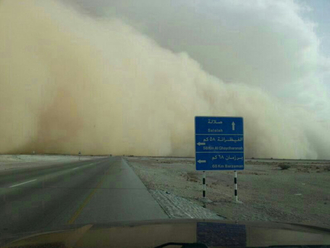Beirut: Residents of Damascus are trying their best to get a good laugh out of their misfortune, sharing funny videos and jokes about their crippling electricity crisis — the worst in the Syrian capital since 2011.
Most are of black and white comedy films of the early 1970s, mocking sharp electricity cuts that were nothing compared to what is happening today in 2015.
The reasons for today’s crisis are numerous. One is the shortage of fuel for power generation, as the roads to Al Qaryatein southwest of Palmyra have been cut off by Daesh. So are the roads to Mosul in neighbouring Iraq. According to the Ministry of Electricity, 32 of the original 54 electric turbines are offline because of lack of fuel.
Another reason is the constant bombing of government power plants by Islamist rebels in the Damascus countryside. With the government entering its fifth year of war it simply can no longer provide regular electricity to the residents of the Syrian capital and curtly refuses to privatise the industry, allowing businessmen to sell electricity through giant generators to each neighbourhood, as the case in Lebanon since the 1980s.
“If this happens,” said one senior official to Gulf News, referring to privatisation, “people will come out in the streets. They won’t accept to pay astronomical amounts for electricity.”
Although periodic cuts were common in Damascus before the war, electricity was regularly provided by the socialist state at comically low prices. Until mid-2015, the electricity cuts were only strongly felt in lower-end neighbourhoods of Damascus but now the crisis has reached the posh upper-class districts of the city. Residential areas like Al Maliki, Abu Rummaneh, and Mezzeh — inhabited by top officials and not too long ago, by diplomats and foreigners, are no longer immune to the problem. These places are where important government buildings are located like army headquarters, parliament, the Syrian premiership, and the presidential palace. Government media prefers to call it “electricity rationing,” claiming that it is strongly felt during the hot summer months of July-August and the cold winter ones of December-January.
Dining at 5-star venues like the Damascus Four Seasons hotel, one is stunned when the entire hotel turns dark for seconds, only to be restored to life with its giant generator. Other places of course are not that lucky. In places like Souq Saruja, an ancient 800-year old neighbourhood outside the Old City of Damascus, power comes on when the work day starts at 8am and stays until 10am. It is switched off automatically until 2pm, restored for two hours, then switched off between 4pm to 8pm. It is then restored until 10pm and turned off completely until next morning. In other parts of the city near front lines with the Damascus suburbs, the power cut can be as severe as 16 hours per day.
Damascenes have turned to creative ways to manage their lives without electricity. One is to purchase large car batteries (costing around $150 each) for homes and offices. They can provide for regular room lighting, internet routers, and television but snap if heating devices or air conditioners are switched on.
Some purchase small home batteries for each necessary devices, costing no more than $10 each and used for washing machines, routers and phone charging). Another option is to buy LED lights, which have flooded the “Electricity Market” near Marjeh Square in the heart of Damascus.
Shops, firms, government agencies, and well-to-do Syrians use power generators running on gasoline or diesel. The price of one generator can cost anywhere between $300-$800, and owners must be able to secure gasoline or fuel, which are both in high demand and short supply. Those who can buy “none of the above” are getting used to living in darkness — returning to primitive methods, like burning logs for a bonfire — to stay warm during the harsh winter.












